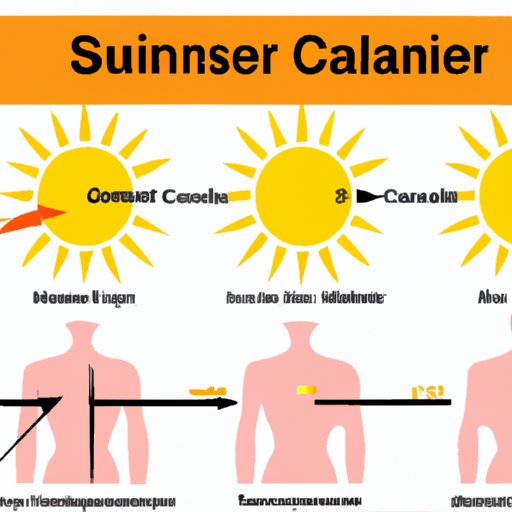
I. Introduction
Skin cancer is the most common type of cancer in the United States. According to the American Academy of Dermatology, one in five Americans will develop skin cancer in their lifetime. Understanding the causes and risk factors of skin cancer is essential to protect yourself and your loved ones. In this article, we will explore the different ways you can get skin cancer and emphasize the importance of taking preventive measures to reduce your risk.
II. Understanding UV Radiation and Skin Cancer
The primary cause of skin cancer is exposure to ultraviolet (UV) radiation from the sun. However, other sources of UV radiation, such as tanning beds and sun lamps, can also increase the risk of skin cancer. UV radiation can damage the DNA in skin cells, leading to mutations that may eventually result in the development of cancer.
III. Risk Factors for Skin Cancer
Several factors can increase the likelihood of developing skin cancer. Family history, fair skin, frequent sunburns, and exposure to UV radiation are among the most significant risk factors. Fair-skinned individuals, for example, have less melanin, a pigment that helps protect the skin from UV radiation. As a result, they are more susceptible to skin damage from the sun’s rays.
IV. Types of Skin Cancer
There are three main types of skin cancer: melanoma, basal cell carcinoma, and squamous cell carcinoma. Melanoma is the most aggressive type of skin cancer and can spread to other parts of the body if not detected and treated early. Basal cell carcinoma and squamous cell carcinoma are less dangerous but can still cause significant damage to the skin and surrounding tissues. Treatment options for skin cancer include surgery, radiation therapy, chemotherapy, and immunotherapy.
V. Environmental Factors and Skin Cancer
While UV radiation is the primary cause of skin cancer, exposure to environmental pollutants and chemicals can also increase the risk of developing skin cancer. Air pollution, for example, can contribute to skin damage and increase the likelihood of developing skin cancer. Certain chemicals, such as arsenic and industrial pollutants, have been linked to an increased risk of skin cancer. To minimize exposure to these environmental factors, it is essential to avoid or reduce exposure whenever possible.
VI. Sun Safety Measures
Proper sun safety measures can help reduce the risk of developing skin cancer. Wearing protective clothing, such as long-sleeved shirts and wide-brimmed hats, can shield your skin from the sun’s harmful rays. Using sunscreen with an SPF of 30 or higher and reapplying it every two hours can also help protect your skin. Lastly, seeking shade and avoiding peak hours of sunlight can further reduce your exposure to UV radiation.
VII. Regular Skin Cancer Screenings
Early detection is critical in preventing the spread of skin cancer. Regular skin cancer screenings can help identify potential problems before they become more serious. The American Academy of Dermatology recommends that you examine your skin at least once a month and make an appointment with a dermatologist if you notice any suspicious moles or spots.
VIII. Conclusion
Skin cancer is a serious disease that can be prevented with proper knowledge and preventive measures. Understanding the different ways you can get skin cancer and taking the necessary steps to protect your skin can help reduce your risk. Remember to stay safe in the sun, minimize exposure to environmental pollutants and chemicals, and schedule regular skin cancer screenings. By following these guidelines, you can take control of your health and reduce your risk of developing skin cancer.




